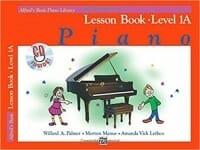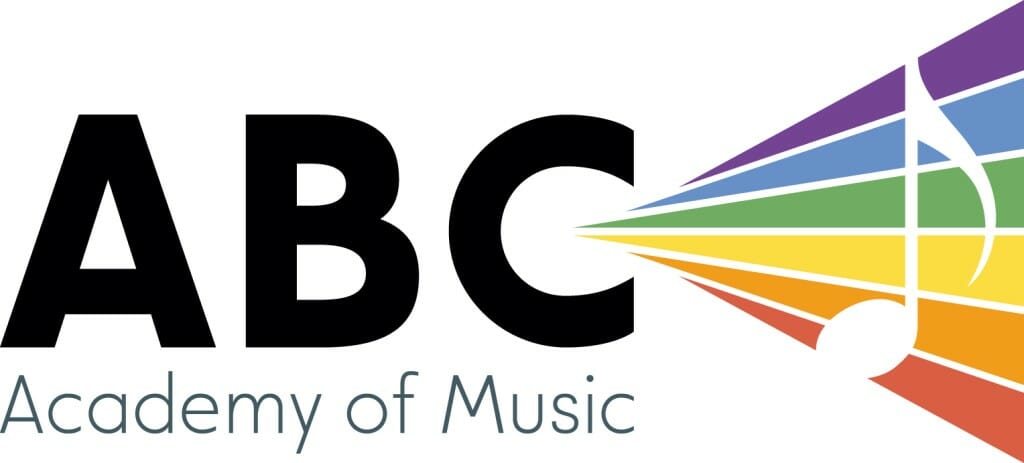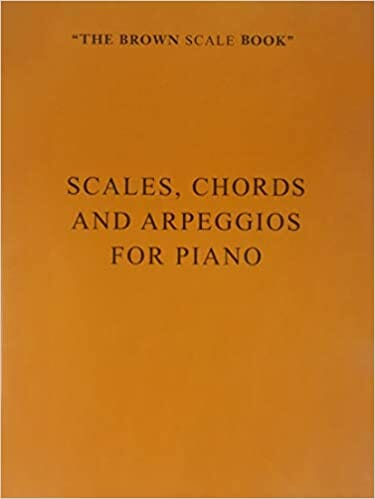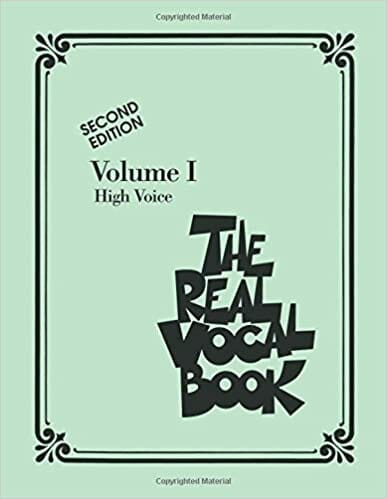B.Mus (Humber) in-progress
Adina is a singer-songwriter based in Toronto completing her Bachelor of Music degree at Humber College in vocal performance. Trained classically in piano since the age of 5, she has branched out into pop and jazz as well.
Vocally she is well-versed in many genres including jazz (she loves to scat!), musical theatre, pop, singer-songwriter, country, R&B, and acappella. She has 7 years of choir experience in both chamber and jazz styles. Adina has been writing and singing original songs since the age of 12, and has two singles as well as an EP out on all platforms under the artist name Adina V.
She has performed all across southern Ontario singing with the Toronto All-Star Big Band, as well as at various venues in the GTA with her own jazz duos and trios. As a member of the Cawthra Park Chamber Choir she performed at Roy Thompson Hall with the TSO for two years in a row. At Humber College she is part of the Vocal Jazz Ensemble led by Lisa Martinelli; this group performs advanced repertoire at events like the Ontario Vocal Jazz Festival.
Adina has been teaching music for the past 7 years and loves helping students meet their personal goals while fostering a love of music that lasts forever!
Get to know Adina…Beyond the Bio!
Hobbies: reading, puzzles, video games, painting
Musical Influences: Ella Fitzgerald, Nancy Wilson, Doris Day, Joni Mitchell, Taylor Swift, John Mayer
Favourite Food: Pad Thai
Least favourite food: eggplant
Favourite music: Indie rock and folk
Favourite song: All I Need by Jacob Collier ft. Mahalia & Ty Dolla $ign
Favourite movie: Matilda
Favourite movie music: The Pirates of the Caribbean theme
Favourite Musical: Dear Evan Hansen or The Last Five Years
Best Quote from your teacher: “It’s an amazing and wonderful experience to be able to be intentional about, in the moment, making music”
Favourite Quote: “Even as we are, we are becoming”
Favourite Book: The Girl With the Dragon Tattoo trilogy – Stieg Larsson
Best thing about teaching at ABC: Sharing and fostering a love of music with students of all ages
Latest Homework from Adina
Is Adina Your Teacher?
Sign up now to get your weekly assignments delivered, and never lose your homework sheet again!
Sunday, April 18th, 2021
Sahil
Recommended minutes to practice: 15 minutes a day
What to practice: Thumbs on C and C position (hands together) piano warmups, songs in your new piano book up until the whole note page, BeyBlade Burst Evolution, 2 vocal warmups (ya ya ya, and 5-note position), Baby Shark
How to practice it most effectively: The thumbs on C warmup is the one where finger 1s start on middle C and then we walk the fingers out then back in. In the C position warmup please play hands together, matching Cs together, then Ds together, etc. up and back down. For the piano book, please play all the short songs until the whole note page, filling in the worksheets on the half note and whole note pages as well. Use the “hand position” piano diagram to find what keys to put your fingers on. Remember that RH’s stems point up, and LH’s stems point down. Continue playing RH only for BeyBlade Burst Evolution, getting the fingerings and counting very comfortable. The new vocal warmup we learned today starts in C position, where we sing C-D-E-F-G, then back down on “ooh”. After C position, shift up to D position, then E position, etc. Once you get high enough, go back to C position and make your way down to A position. Before singing the vocal warmup, play the notes once on piano first so you can hear what pitches to match. Baby Shark uses notes D-E-G and once in a while F#. Try singing and playing it together!
Nathalia
Recommended minutes to practice: 15-20 minutes a day
What to practice: Runaround Sue
How to practice it most effectively: In the A sections (beginning and end) of Runaround Sue, use the common notes between RH’s intervals to help you make transitions easier and quicker. Playing with the written finger numbers will also help here. For the B section, please isolate bars 9, 11, and 13 for rhythm – make sure you’re playing the correct number of RH notes, and lining the hands up on beat 3. Continue playing this middle section slowly and use your Every Good Boy Deserves Fudge, FACE in the space sayings for RH notes, and Good Birds Don’t Fly Away, All Cows Eat Grass for LH notes.
Sina
Recommended minutes to practice: 10 minutes a day
What to practice: Thumbs on C and C position warmups, Jolly Old St. Nicholas, Old MacDonald
How to practice it most effectively: For your two warmups, go slowly and focus on connecting between the fingers. Today we learned about dynamics, which are the f and p that tell us to play loud or soft. Try playing the first page of Jolly Old St. Nicholas loud, and the second page soft. Always watch the stem direction so you know which hand’s turn it is to play. For Old MacDonald, the complete song is once through the first page, then the second page, then go back to the first line of the first page. Use the “hand position” piano diagram to find what keys to put your fingers on. In everything we play, please make sure your wrists stay flat and fingers are bent.
Tuesday, April 20th, 2021
Anaya
Recommended minutes to practice: 10 minutes a day
What to practice: Circus Day, page 42 RH warmup, and A Happy Song
How to practice it most effectively: For Circus Day, continue speaking the letters out loud as you play, paying attention to the endings of line 1 and 2 – they are close but not quite the same! When counting half notes and quarter notes while you’re saying the letters, always start at number 2, since saying the letter is already one beat. For the p. 42 warmup, you may say the letters as you play RH, but in A Happy Song don’t do this yet. Instead, point with LH to help RH watch the directions and any sneaky back & forth moments. The new important note we learned in RH’s treble clef is the 2nd line G.
Saskia
Recommended minutes to practice: 10 minutes a day (only if your voice isn’t feeling too tired!)
What to practice: 2 vocal warmups, Do a Deer
How to practice it most effectively: Please make sure you do a warmup every time before you sing, being extra gentle and soft with your voice. Start with a few sliding sighs from high to low, taking a big breath before each one. Then move into the “n-ah-n-ah-n-ah” warmup on one note at a time. Try to channel the sound through your nose and keep the same sensation whether you’re on the closed or open part of the exercise. The final warmup is the 3-note up and down on either “na na na” or “ma ma ma”. As you go up, switch to your head voice and think “choir tone” with a long vowel even if it might feel silly! Whenever we sing we want our chin to be a little tucked, creating space in the back of the neck & throat. For Do, a Deer, pay extra attention to the melody pitches in the “sol, a needle pulling thread”…”la, a note to follow sol”, “ti, a drink with jam and bread”, especially the notes in the middle of the phrase. If you need to slow the youtube video down to 0.75x speed please do!
Gianna
Recommended minutes to practice: 10-15 minutes a day
What to practice: scale and skips warmups, Life is an Adventure
How to practice it most effectively: The warmups to work on this week are our C major scale using “na na na” syllables, and the skips warmup in C, F, and low A position on “ah”. The big focus for this week is Life is an Adventure! With the notes and lyrics in front of you, isolate two lyrics at a time, starting with “Life is like walking through the jungle, Life is like climbing a tree” the first day, then the ending “You never know what is going to happen next, You never know what’s going to hit you or me” the next. Your first half of the song is sounding very solid, so let’s get the second half feeling just as comfortable. Please remember to enunciate your lyrics – we want to hear what you’ve written!
Ken
Recommended minutes to practice: 15 minutes a day
What to practice: Changing Moods, The Queen’s Royal Entrance, Aardvark Boogie
How to practice it most effectively: Changing Moods is our warmup song again this week; the biggest focus here is to go a little slower to make sure both hands press their notes at the exact same time. The Queen’s Royal Entrance is almost recital ready! Bars 9 to 15 make sure your quarter notes are in time with your previous section and all even. There is also a rit in the second last bar so you can have a dramatic finish. For Aardvark Boogie, rhythm is the most important part! In all bars with tied notes be extra careful with your counting. There are many eighth note in this piece, so any time there’s a quarter note make it super clear that it’s a full count.
Steve
Recommended minutes to practice: 10-15 minutes a day
What to practice: Storms on Saturn, Cheers for D Chords, and This Old Man (RH and LH)
How to practice it most effectively: Cheers For D Chords will be a warmup song this week – we have D position chords in blocked and broken form, then C position chords. We always play chords like this with fingers 1-3-5. In Storms on Saturn, take your time especially with holding the whole notes. There are lots of dynamics in this piece to make it interesting! This Old Man has two versions: one with RH on melody, and the other with LH. Please double check that your hands are always in D position, and remember your F#s last for the whole bar.
Gabe
Recommended minutes to practice: 15-20 minutes a day
What to practice: Porcupine Dance, Suitor’s Song
How to practice it most effectively: For Porcupine Dance, please focus just on the first 4 bars hands separately, getting really comfortable with going between positions using staccatos and 1-3-5 fingers. The rhythmic pattern here is 4 notes, then 3 notes, then 4 notes, then 3 notes. In Suitor’s Song, let’s count out loud with “ands”, especially once we get to bar 9.
Isaac
Recommended minutes to practice: 15-20 minutes a day
What to practice: Blinky the Robot, Relay Race, and finishing page 66 of the theory book.
How to practice it most effectively: For Blinky the Robot, let’s keep playing the whole form through with the D.S. and coda. Remember to keep your staccatos light and bouncy the whole way through. Page 2 has lots of cool dynamics to start including. sf means suddenly loud. For Relay Race, let’s play the whole piece hands together slowly, connecting under all the slurs. The time signature is 6/8, meaning eighth notes get one beat, and quarter notes get two.
Wednesday, June 16th, 2021
Dvorah
Recommended minutes to practice: 10 minutes a day
What to practice: Octavius the Octopus, Copycat
How to practice it most effectively: In Octavius the Octopus your LH is playing octaves from middle C to bass C; use fingers 1 and 5 for these. For the second line, please use the C major scale fingerings we wrote down (5-4-3-2-1-3-2-1); of course, you can also try once with the 3-3-3 fingering! For Copycat, LH is always copying RH’s melody just lower. Both hands are in C position. Please watch your steps versus skips on the music.
Diya
Recommended minutes to practice: 20 minutes a day
What to practice: Haunted House, Classic Dance, brainstorm new vocal song ideas!
How to practice it most effectively: For Haunted House, you can try adding the last 2 lines in, hands together. Make sure you’re holding all your half notes the full 2 counts. If you’d like, you can add in some of the dynamics (louds and softs). Note your melody directions in RH’s last line – this part is all steps. For Classic Dance, please play the full song hands separately. Line 1 is exactly the same as line 3! Keep working on the legato versus staccato articulation. RH’s second line pattern is up-down-up, up-down-up, etc.
Marco
Recommended minutes to practice: 15 minutes a day
What to practice: Flute of the Andes, Runaway Rabbit
How to practice it most effectively: Flute of the Andes is almost all C and G 4ths! Use FACE in the space to help you with RH’s space notes. Please try to do the slurs in the RH. The 8va symbol at the end tells you to play those same letters 1 octave higher! For Runaway Rabbit, really notice if notes are moving from space to line, line to space (steps and fourths) or space to space, line to line (skips). There are a lot of 4ths in the melody (most often from C to F or D to G).
Oliver
Recommended minutes to practice: 15 minutes a day
What to practice: Firefly (in G position!), and Mexican Jumping Beans
How to practice it most effectively: For Firefly, see if you can play the piece in G position (so RH thumb on G, LH pinky on G). The notes will be different, however the finger numbers, steps vs. skips, and direction of the melody will all be the same! For Mexican Jumping Beans, we are in C position and everything is very staccato. Double check LH letters by using the sayings for bass clef (All Cows Eat Grass and Good Birds Don’t Fly Away).
Alice
Recommended minutes to practice: 15 minutes a day
What to practice: Bells of Great Britain, Let Me Love You
How to practice it most effectively:Bells of Great Britain does not have too many notes, so this is a great song to do dynamics on (f, p, mf, etc.) Please play with the repeat, and try holding down your right foot pedal for the whole song for a cool effect! For Let Me Love You, think of your “nah nah nah” as one long “ah” with your tongue/mouth doing the Ns. You can practice this by just singing “Don’t you give up, naaaah”, “I won’t give up naaaah” before adding the other 2 syllables. The other thing to try in this song is really pronouncing the V in “love”. Remember to give yourself your starting G before singing along to the recording!
Linda
Recommended minutes to practice: 20 minutes a day
What to practice: Pyrenese Melody, I’ve Got You Under My Skin, Cool Groove
How to practice it most effectively: For the Pyrenese Melody, continue at a consistent, moderately slow speed. LH in bars 1 and 13 tends to rush the eighth notes, so just keep your tempo in mind. There are a couple of moments where there are C#s and G#s that sometimes get missed, but I think you noted those down on your sheet music already. For I’ve Got You Under My Skin, please remember that if a flat symbol is right next to the letter, it’s referring to the root of the chord. If the flat symbol is on the other side of the 7 (so the quality), it is referring to an alteration (like b5, b9). Some specific chord tips: A7b9 in the RH is just C# diminished 7; Eb7 is like E7 with every single note moved down 1 semitone. The quality rules that we had spoken about being in quadrants are: C7 (+3, b7), Cmaj7 (+3,+7), Cmi7 (b3, b7), and Cmi(maj)7 (+3, b7); where “+” means major and “b” means flat. C7 is the basic chord. Cmi(maj)7 is the furthest thing away. You can practice playing these variations from a few different roots (C, G, F); note how only the 3rd and 7th move.
Emet
Recommended minutes to practice: 20-25 minutes a day
What to practice: Rock Around the Clock, Haunted House
How to practice it most effectively: For Rock Around the Clock, let’s play the first page hands together and second page hands separately. Remember that the swing feel (long-short) only affects eighth notes; quarter notes are still just on the numbered beats and hold for a whole beat. It helps to keep a “1+2+3+4+” swung counting in your head while you play. On the second page, LH’s bassline should be all connected and grounded. For Haunted House, please play until the 1st ending hands together. When notes and rhythms feel comfy, add the staccatos to make it even spookier!
Kollel
Recommended minutes to practice: 25 minutes a day
What to practice: The Entertainer, The Black Pony, preliminary look at A Faded Letter
How to practice it most effectively: For The Entertainer, please continue playing the first section hands together slowly, and add the second section hands separately (until the 1st ending). LH in the second section has a lot of similar shapes (C, G, F majors) as the first section. For RH’s thirds, please use the written fingerings. For The Black Pony, make sure you start and continue along at a consistent speed (even if this is slower than you might want to go). Please keep it bouncy with light, short staccatos! You can start having a preliminary look at A Faded Letter if you’d like.
Preferred Books for Adina’s Students
Click to buy them here, and they’ll come right to your house! What could be easier?
Alfred's Basic Piano Library Lesson Book 1A

Alfred's Adult Basic All-In-One
Alfred’s Basic Adult All-in-One Course is designed for use with a piano instructor for the beginning student looking for a truly complete piano course. It is a greatly expanded version of Alfred’s Basic Adult Piano Course that will include lesson, theory, and technique in a convenient, “all-in-one” format. This comprehensive course adds such features as isometric hand exercises, finger strengthening drills, and written assignments that reinforce each lesson’s concepts. There is a smooth, logical progression between each lesson, a thorough explanation of chord theory and playing styles, and outstanding extra songs, including folk, classical, and contemporary selections.
The Brown Scale Book
This essential resource includes all major and minor scales, triads, arpeggios, dominant sevenths, and chromatic scales organized by key. A favorite for decades, The Brown Scale Book belongs in every student’s library.
The Real Vocal Book
The Real Vocal Book has many of the selections from Volumes 1 and 2 of the instrumental Real Books, but now with complete lyrics added to the pre-existing melody line. This edition features 300 essential songs arranged for low voice, including: Alfie * All of Me * Autumn Leaves * Bewitched * Bluesette * Don’t Get Around Much Anymore * Fever * Georgia on My Mind * Misty * Moon River * My Funny Valentine * Satin Doll * and more. Looking for a particular song? Check out the Real Book Songfinder here.









